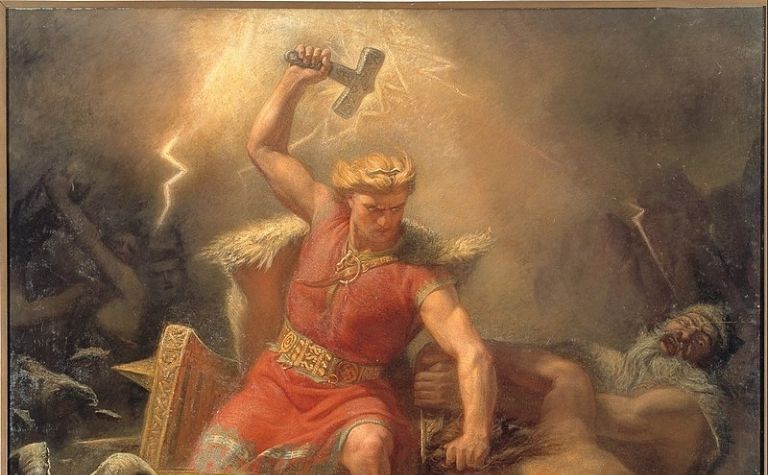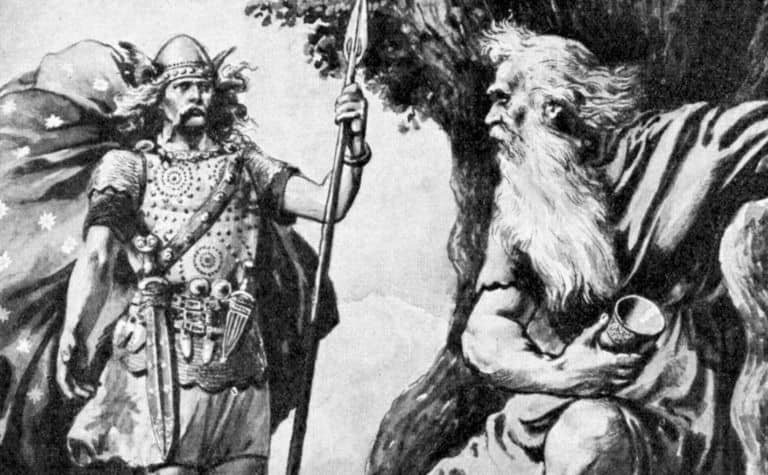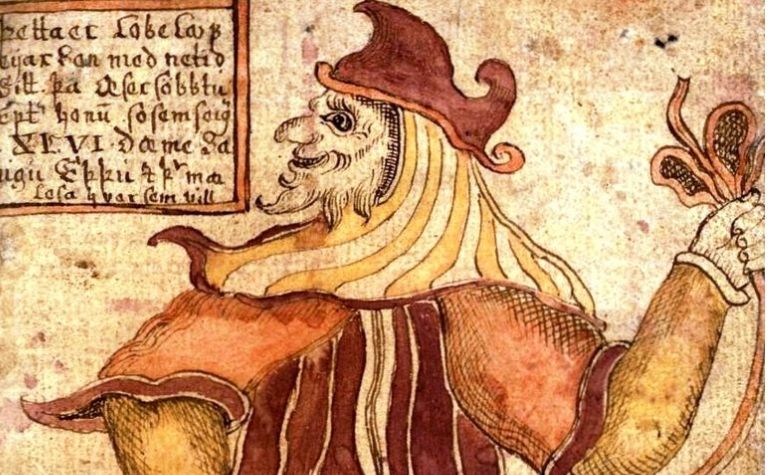Norse mythology is one of the oldest continuously practiced pagan belief systems in the world and is still observed today. But how does it line up with the more commonly practiced Abrahamic religions in the world?
Sin is a Judeo-Christian concept, and there is no equivalent in Norse mythology. What mattered at the end of the day was how you lived your life and how you died.
You would only be punished in the afterlife for the gravest of criminal offenses, not moral ones.
Even then, the afterlife is not necessarily going to end with you being punished. Only those slain in battle would go to Valhalla, the closest thing to Heaven in Norse mythology, or Fólkvangr, a hall similar to Valhalla but presided over by Freya.
Everyone else would go to Niflheim, including those who died after living ‘good’ lives.
Also, see Norse Mythology vs Greek Mythology: What’s the Difference? to learn more.

Does Norse Mythology Have a Hell?
Norse mythology doesn’t have a “hell” (i.e., a place dedicated to the punishment of evil people). However, there is a Hel, ruled by the goddess of the same name.
It’s in Niflheim and is a dark, lonely place. However, it isn’t reserved for evil people, nor is it a place where souls are tortured.
The goddess Hel is the ruler of this realm. She is the daughter of Loki, and it is believed that everyone who did not go to Valhalla or Fólkvangr went to her domain instead.
She is the queen of the Norse underworld and controls every aspect of Niflheim.
The only way to get into Valhalla with Odin himself is to die bravely in battle, and even then, some of the most valiant warriors were sent to Fólkvangr instead.
Everyone else was sent to Niflheim, including those who died of old age or sickness.
Only the most grievous of errors were punished in Niflheim. These were:
- Murder (without cause)
- Breaking a vow or contract
- Adultery
People who committed these acts were punished severely by having their blood sucked out by a dragon and being forced to wade through rivers of serpent poison.
This was only part of one section of Niflheim as well. Some records and materials have said that there are as many as three different sections that souls would inhabit while in the underworld.
The Norse underworld is more similar to the Greek underworld than Christian theology about Heaven and Hell. There are specific sections for those who:
- Lived valiantly
- Broke the most severe social tenets
- Who lived average lives
The worst punishment a Norse pagan would face for moral failings is being shunned socially by their peers.
According to the Poetic Edda, the gods themselves care little for mortal troubles and do not care if someone has lied to their parents or not.
Even then, there was a completely different culture about indulgence and hedonism.
These were things seen as gifts to be enjoyed; no one would be shamed for getting incredibly drunk and waking up in another’s bed.
Also, see Is Norse Mythology Or Greek Mythology Older? to learn more.

What Norse Gods Are Evil?
None of the Norse gods are necessarily evil, although there are several figures who are specifically antagonists in different stories.
Some people mistakenly refer to Loki, the trickster god of chaos, as being evil, but even this is contested, as he is more mischievous than bad and also does good.
The vast majority of gods in the Norse pantheon are written as explicitly good and have realms focused on the best tenants of humanity. These include:
- Justice
- Truth
- Wisdom
- Honor
- Bravery
All of these are heavily valued by Norse society.
This doesn’t mean that all the gods are perfect per se. Some Norse gods often make mistakes or act maliciously towards their fellow gods, just as there are giants who have helped Norse gods. The best example of this is Loki.
Loki, God of Trickery
Loki is the most notorious of the gods, and it may be easy to call him evil, but he is the archetype of a trickster god.
These archetypes act in ways that best benefit them and help or hinder the other characters. Their goal is to cause mischief and trick others into suiting their needs.
In the Eddas, Loki sired many monsters in different myths, including the wolf Fenrir and the serpent Jörmungandr. These antagonists hurt the other gods and will herald the end of the world, known as Ragnarok.
He was also responsible for the god Baldr’s death, which turned the other Norse gods against him. This is recorded in the Prose Edda at length and explains how Loki tricked Hodr into killing Baldr with a mistletoe branch.
However, Loki also has helped out the other gods in various different adventures. One notable example is described in detail in the Prose Edda and is the origin story for Sleipnir.
A builder was creating a fortification in exchange for the hand of the goddess Freyja and the sun and moon. He successfully distracted the builder’s horse and stopped the builder from meeting his deadline.
Loki has also helped Thor out on many of his adventures in the Poetic Edda and other depicted stories. He is both a good and bad figure and can’t be judged as good or evil overall.
This nuanced look at the world and morality is something that makes Norse mythology unique and different from other Western theology.
It mirrors the way that Norse society viewed character, behavior, and what qualifies as unforgivable.
Also, see Is the Norse Religion Still Practiced? to learn more.

Does Norse Mythology Have a Bible?
Norse mythology does not have a Bible in the same way that Christianity does. There are records of the earliest Norse myths, but the origins of those are contested and heavily influenced by Christian observers and are not primary sources.
The two most prominent records are the Poetic Edda and the Prose Edda.
The surviving translations of the Poetic Edda were influenced by Christian historical writers during the medieval period.
The Prose Edda is largely credited to Snorri Sturluson, also a Christian, but scholars don’t believe all the surviving manuscripts of the Edda were written fully by him.
What we know of Norse mythology almost entirely comes from outside written records from groups like:
- Arabic travelers
- Rune stones
- Skaldic poetry
Anthropologists can also glean some information from early legal documents that explain pre-Christian deals and business.
There are no surviving paper records of Norse mythology and how the Vikings worshiped their gods. We have to work with the material records to understand the imagery and symbols associated with various gods and goddesses.
Conclusion
Norse mythology is utterly different from Christianity, and many concepts cannot be translated over because of the different views on morality.
Also see Does Norse Mythology Have Demigods? to learn more.
